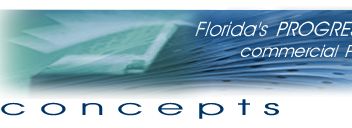B
|
|
back margin
|
The space between the edge of the text matter and the fold
edge. Alternative terms: binding margin, gutter margin.
|
|
back matter
|
The material printed at the back of a book (e.g., agenda,
appendix, bibliography, glossary, index, etc.). Alternative
term: end matter.
|
|
Back printing
|
Printing on the underside of transparent paper or film. Alternative
terms: reverse printing; second-surface printing.
|
|
backbone
|
The part of a book connecting the front cover to the back
cover. Alternative term: spine. See also: rounding and backing.
|
|
background
|
The area appearing behind the main subject or upon which
the main subject is placed.
|
|
backing
|
See rounding and backing.
|
|
backlining
|
The material that strengthens the back of a book after it's
been rounded and backed (e.g., paper, muslin, etc.).
|
|
back-trap
|
mottle Blotchy spots or streaks in an overprinted ink.
|
|
backup
|
Creating an archive copy of digital information as insurance
in the event the original information is lost or damaged.
|
|
backward broadside
|
A page on which the text is printed sideways.
|
|
bad break
|
Awkward visual composition resulting from ending a page with
a single word; ending a page with a hyphenated word; ending
a page with the first line of a paragraph; using a hyphenated
line of text in the first line of a page; or dividing a word
incorrectly. See also: orphan; widow.
|
|
base material
|
See face material Alternative terms: body stock; face stock.
|
|
binding margin
|
The space between the text matter and the fold edge. Alternative
terms: back margin, gutter margin.
|
|
bitmap
|
An image that is digitally produced using dots rather than
a mathematical formula. See also: line art; object oriented;
raster; vectors.
|
|
bleed
|
1. Used when an image is meant to extend completely to the
edge of the finished sheet. Printing a color beyond the trim
edge of a sheet to ensure that there is no white space at
the edge after the substrate on which the image is printed
is trimmed to finish size. See also: extended color; full
bleed. 2. Adding a small border of the same color to an image
detail so the color overlaps a different, adjacent color.
The intention is to ensure that no white space is visible
where the two colors meet even if there are slight variations
in registration (x y positioning) of the two colors. See also:
choke; registration; spread; trapping.
|
|
blueline
|
1. A proof made on special paper producing a blue on white
print when exposed to a negative overlay. The paper used has
been treated with iron. See also: brownprint; silverprint;
Van dyke. 2. A blue colored print created from an offset printing
plate and used in the production process. 3. A line or image
created with special blue ink that is not reproduced in photographic
negatives or positives. Often used for positioning notes or
instructions.
|
|
body stock
|
1. The paper on which coatings are laid down to create coated
printing papers. 2. Any material such as paper suitable for
converting into sheet goods. Alternative terms: base material;
face material; face stock.
|
|
breakacross
|
A continuous image that covers two facing pages without any
visible gutter. Other terms: crossover; reader's spread. See
also: spread.
|
|
bristol
|
A heavy paper used for printing. The paper's thickness can
range from 6 points or higher.
|
|
brownprint
|
A brown colored print made by contacting a negative on a
special sensitized paper. The paper used has been treated
with silver and iron. Not to be confused with sepia prints
or black colored photographs. See also: blueline; silverprint;
Van dyke.
|
|
business paper
|
A general category of paper used for everyday business purposes
(e.g., copy paper, bond letterhead paper, etc.).
|





